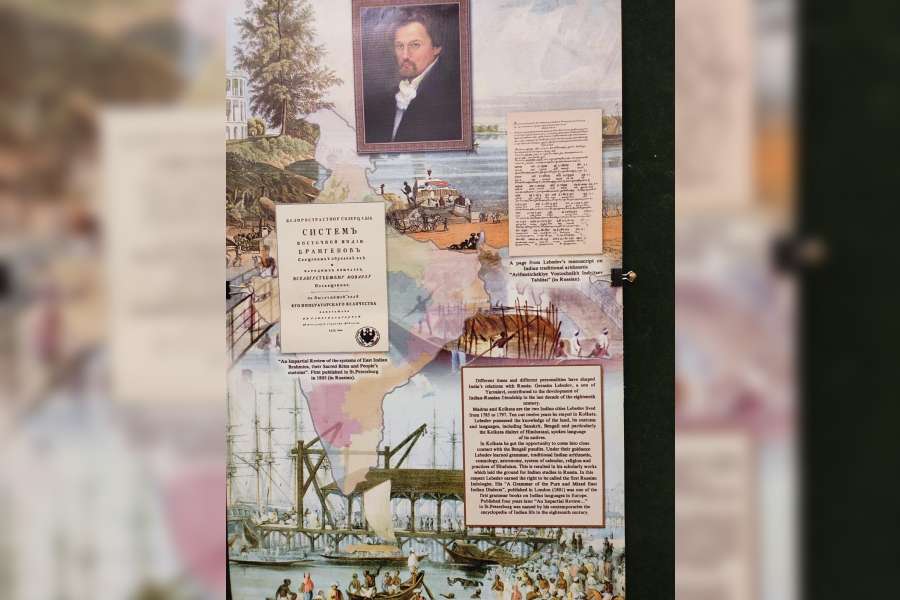A programme on the occasion of World Theatre Day on March 27 at the Russian Centre paid tributes to the pioneer of Bengal theatre, Gerasim Stepanovich Lebedev, who introduced the European-styled proscenium theatre in India and staged the first performance in 1795 in Calcutta.
An exhibition on Lebedev and a talk on Bengali theatre by theatre critic Samik Bandyopadhyay were part of the programme.
The event also marked the inauguration of a commemorative programme for the 275th birth anniversary of Lebedev (1749-1818).
The exhibition at Gorky Sadan charted the life and times of the Russian Indologist tracing the growth of Indo-Russian ties from the 18th century through drawings of 18th century Russia and Calcutta.
Lebedev was the earliest torch-bearer of Indo-Russian relations.
He was born in Yaroslavl, an ancient city in central Russia on the banks of the Volga, located on one of the major trade routes. The city was hence visited by traders from other countries, including India.
Russian archives have documents that list Indian merchants in the area from 1650.
Lebedev came to India and travelled to Calcutta where he learnt Bengali, Hindi and Sanskrit. He founded a drama theatre in 1795 on Ezra Street and translated two plays into Bengali — Love is the Best Doctor and The Disguise — and staged them. He cast Bengalis in his plays and composed music with lyrics by poet Bharatchandra Ray. Lebedev’s theatre became so popular that the British burnt it down.
At the Russian Centre for Science and Culture, Bandyopadhyay delivered a lecture on 150 years of commercial Bengali theatre. He regretted that despite a long history, commercial theatre in Bengal did not fare very well.
Bandyopadhyay spoke of theatre personalities Sisir Kumar Bhaduri and Sambhu Mitra. He said: “Mitra was a huge critic of Bhaduri through 1955-60. But from 1961-62, he turned very respectful of Bhaduri.”
In an interview, Bandyopadhyay said Mitra told him: “Those of us who have watched Sisir Bhaduri’s plays, he remains our reference point but it was the work of his last 10 years.”
Bandyopadhyay said Mitra’s works, too, starting from Rakta Karabi in 1954 to Raja Oedipus in 1964, span a decade. “There were so many years when Sambhu Mitra did not stage a play. We never questioned him... Because we do not judge or question, Bengali theatre is so short-lived,” said Bandyopadhyay.
He gave the example of Lawrence Olivier and how he staged King Lear when he had cancer. Bijon Bhattacharya, too, performed on stage till the last day of his life.
Calling for more critical analysis of Bengali commercial theatre, Bandyopadhyay said: “There should be more literature on Bengali commercial theatre. Books on relations between directors and actors, how directors shaped actors...”
He gave the instance of Nati Binodini’s autobiographies, one that she wrote while Girish Ghosh was alive and another that she wrote after his death.
“The first one had an introduction by Girish Ghosh, which Binodini did not
like. So when he died, she wrote another in Chalitbhasha, uncensored, out of the shadows of Ghosh,” said Bandyopadhyay.
“We always talk of Girishbabu’s greatness while talking of Binodini, how he educated and shaped an uneducated girl to play the parts. But Binodini, even after she left the stage, would come to see plays and would criticise them keenly. Nobody wrote about that.”
